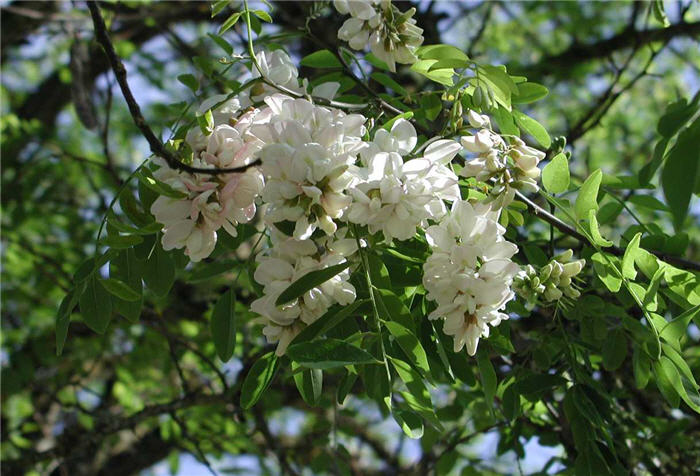| Botanical Name: Robinia pseudoacacia | |
| Common Name: Black Locust |

-
Anatomy
-
Culture
-
Design
Plant Type
Tree
Height Range
40-60', 60-100'
Flower Color
White
Flower Season
Spring
Leaf Color
Blue Green
Bark Color
Grey
Fruit Color
Brown
Fruit Season
Fall, Persistent
Sun
Full
Water
Low, Medium
Growth Rate
Fast
Soil Type
Sandy, Clay, Loam, Rocky, Unparticular
Soil Condition
Average, Rich, Poor, Well-drained, Dry
Soil pH
Neutral, Basic
Adverse Factors
Invasive, Thorns/Spines
Design Styles
Ranch, Spanish
Accenting Features
Fragrance, Showy Flowers
Seasonal Interest
Spring
Location Uses
Background, Park
Special Uses
Naturalizing
Attracts Wildlife
n/a
Information by: Stephanie Duer
Photographer: Connon Nursery
Photographer: Connon Nursery
-
Description
-
Notes
Black locust is a very fast-growing, deciduous tree, typically 40 to 50 feet tall (though sometimes reaching 70 feet) and nearly as wide. It has pinnately compounded leaves that are a dark, dull blue-green, with leaves dropping in the fall before much color change. Flowers are pendulous, white, and fragrant, and bloom late May to early June. Flowers are followed by flat pods that ripen in fall and persist into winter. Bark is dark grey with deep ridges. Wicked thorns, hard wood, and suckering habit makes the Black Locust a challenging maintenance project and best suited for large, naturalized areas.
The flowers on this tree are lovely and very fragrant; its just unfortunate they are on this tree. It can spread both from root suckers and seeds, and can become very invasive. It might be best suited to large, natural areas where its thorns and expansiveness are not a detriment. There is a lovely stand at the Kol Ami Cemetary on 11th Ave, and they are asserting themselves 1000 feet away in the Greater Aves Conservation Garden. If you choose to plant it, it grows best in full sun in well drained soil, though it will tolerate part sun situations. Tolerates high temperatures, poor soils, nitrogen-poor soils, and high pH. It does have a history of breakage in wet storm events in SLC.